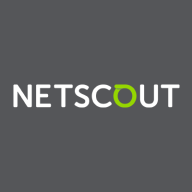

NETSCOUT nGeniusONE and Nmap both compete in the network analysis category, addressing different needs. While nGeniusONE dominates with its feature-rich offerings for deep network visibility, Nmap holds its ground due to cost-effectiveness, making it favorable for budget-conscious users.
Features: NETSCOUT nGeniusONE provides in-depth network traffic analysis, packet inspection, and application-specific monitoring. It offers tools for troubleshooting network issues like jitter and latency, alongside a comprehensive dashboard for real-time communication monitoring. Nmap is efficient in network scanning and port detection, excels in OS identification, and offers advanced script scanning for vulnerability detection.
Room for Improvement: NETSCOUT nGeniusONE users suggest a more user-friendly interface and a modular pricing strategy to avoid paying for unused features. Improvements are also needed in dependency mapping and tool integration. Nmap users advocate for a graphical interface to attract less technical users, faster scanning speeds, and enhanced service identification capabilities.
Ease of Deployment and Customer Service: NETSCOUT nGeniusONE is typically deployed on-premises with hybrid and private cloud options, requiring dedicated support due to complexity. Nmap, primarily on-premises with some hybrid capabilities, benefits from its open-source nature, reducing the need for extensive support, though improved guidance could assist new users.
Pricing and ROI: NETSCOUT nGeniusONE is expensive, with users questioning ROI against budget options, despite its comprehensive monitoring. Nmap, being free and open-source, supports tight budgets while delivering essential network security features without a significant financial investment.
| Product | Market Share (%) |
|---|---|
| Nmap | 0.6% |
| NETSCOUT nGeniusONE | 1.5% |
| Other | 97.9% |


| Company Size | Count |
|---|---|
| Small Business | 14 |
| Midsize Enterprise | 3 |
| Large Enterprise | 37 |
| Company Size | Count |
|---|---|
| Small Business | 9 |
| Midsize Enterprise | 1 |
| Large Enterprise | 11 |
Nmap ("Network Mapper") is a free and open source (license) utility for network discovery and security auditing. Many systems and network administrators also find it useful for tasks such as network inventory, managing service upgrade schedules, and monitoring host or service uptime. Nmap uses raw IP packets in novel ways to determine what hosts are available on the network, what services (application name and version) those hosts are offering, what operating systems (and OS versions) they are running, what type of packet filters/firewalls are in use, and dozens of other characteristics. It was designed to rapidly scan large networks, but works fine against single hosts. Nmap runs on all major computer operating systems, and official binary packages are available for Linux, Windows, and Mac OS X. In addition to the classic command-line Nmap executable, the Nmap suite includes an advanced GUI and results viewer (Zenmap), a flexible data transfer, redirection, and debugging tool (Ncat), a utility for comparing scan results (Ndiff), and a packet generation and response analysis tool (Nping).
We monitor all Network Monitoring Software reviews to prevent fraudulent reviews and keep review quality high. We do not post reviews by company employees or direct competitors. We validate each review for authenticity via cross-reference with LinkedIn, and personal follow-up with the reviewer when necessary.